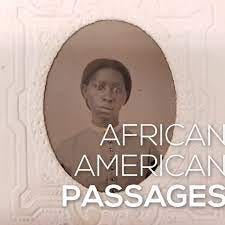Coming up March 14th at 12 noon ET, Hard Histories in conjunction with the Houston Museum of African American Culture will host Prairie View A&M University’s Dr. Marco Robinson and Rice University’s Dr. W. Caleb McDaniel for a discussion about the “hard history” research on their campuses in the Houston area. Register here - it’s quick and free!
I’d never before heard of Adeline Henson when my friend and colleague Georgetown University historian Adam Rothman asked me to join him taking a closer look at a few surviving fragments of her life as an enslaved woman in Baltimore City and as a free person in Washington, DC, after the Civil War. Now, I cannot forget her.
Adam’s discovery in the Library of Congress’s Black History Collection, 1700-2008 — a bill of sale, a letter, and two photographs — permit us to get beyond the stark terms of census returns and indenture contracts to better understand the experience of enslavement in the times of Johns Hopkins.
From these artifacts, a sketch of Adeline Henson’s life emerges. In 1861, Adeline Henson’s enslaver, James Cunningham of Anne Arundel County, proposed to sell her to the slave markets in Georgia. In Baltimore, George and Mary Price agreed to purchase Adeline from Cunningham and in doing so ensured that she would not become another soul caught in the domestic slave trade. (For more on the trade out of Baltimore City, check out our conversation with Dr. Jennie Williams from April 2021.)
It was a fateful turning point in Adeline’s life. She remained enslaved in the Price household until slavery’s abolition, and then worked for them for much of her remaining life.
What we know about Adeline largely comes through a complicated source, a letter penned many years later — in 1937 — by Ida Greenwell, a daughter of George and Mary Price. Donating this small cache of materials to the Library of Congress, Greenwell explained that Adeline accompanied the Price family to Washington, DC, after the war and remained associated with them for the remainder of her life. Adeline, Ida Greenwell explains, lived to be 98 years old.
During our conversation on the Library’s African-American Passages podcast, Adam and I took a closer look at these materials. For me, two things stood out. First was how, looking back, Ida Greenwell framed Adeline Henson’s life in the stock terms of the Lost Cause Myth: Enslavement, in this view, was a benevolent rather than exploitative practice. Adeline was characterized as loved, content, faithful, and “a part of the family the same as [George Price’s] children were.”
Second and perhaps most striking is Ida Greenwell’s claim that Adeline “never left” the Price home, and that “she did not associate with colored people unless it was the help in our house.” What Greenwell meant to convey here is not wholly clear but, whatever her purpose, this part of Greenwell’s story was not accurate. Census returns and city directories show that in 1900 Adeline went by the name Adeline Dicson (elsewhere spelled Dixon). In that year, she lived in as a servant in the Greenwell family home. That was not, however, her entire story. Adeline also was married. Rather than someone who shunned other Black Americans or lived cloistered in a white household, Adeline Henson Dicson, we discovered, had a family of her own.
Our work at Hard Histories includes the critical reading of artifacts such as Ida Greenwell’s letter and looking beneath the surface to restore, as we can, the fullest humanity of figures such as Adeline Henson. You can hear my full conversation with Adam Rothman here, and have a closer look at the documents Ida Greenwell donated to the Library of Congress here.
— MSJ





Our stories continue to be told. Thank you for sharing and yes I will be at this event